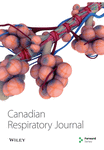Identifying Children with Persistent Asthma from Health Care Administrative Records
Abstract
BACKGROUND: Investigation into the origins of asthma is contingent on definitions of asthma, which can differentiate asthma from transient wheezing syndromes in children.
OBJECTIVES: This research was undertaken to develop a definition for asthma derived from health care administrative records, which would identify children with persistent asthma.
PATIENTS AND METHODS: Using population-based, health care administrative data, children with possible asthma were identified as having one or more physician visits or hospitalizations for asthma or bronchitis diagnoses from January 1995 to December 1995, or, in the absence of asthma-like diagnoses, one or more prescriptions for asthma prophylaxis drugs or ketotifen concomitant with a betaagonist, or two or more prescriptions for beta-agonists.
RESULTS: The likelihood of persistent asthma, defined as repeated health care and prescription use for asthma from 1996 to 1998, was assessed for various asthma markers and risk factors in 29,198 children with possible asthma. Children with asthma prescription drugs or asthma health care use not limited to the winter season were three to six times more likely than children without these characteristics to have persistent asthma. The likelihood of persistent asthma was elevated to a substantial degree in the presence of both of these markers.
CONCLUSIONS:The inclusion of these measures in a diagnosisbased definition improves the ability to identify persistent asthma in children.




